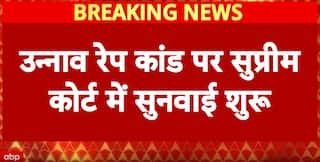Independence Day 2023: Reforms To Post-Covid Recovery — Indian Economy Milestones Since 1947
Independence Day 2023: The Indian economy today is one of the largest in the world and the third-largest in terms of Purchasing Power Parity.

Independence Day 2023 Special: India will celebrate it’s 76th Independence Day on August 15 this year. The journey for the country since 1947 has been a remarkable one. Today, the Indian economy is one of the largest economies in the world and the third-largest in terms of Purchasing Power Parity (PPP).
Let’s take a look at the major achievements of the Indian economy which led it to where it stands today.
Food Self-Sufficiency
In the 1960s, India was dealing with a multitude of problems. Mass famine and increasing imports from the US were worsening the country’s food shortage. During this time, with the introduction of high-yielding variety (HYV) seeds, subsidised fertilisers, and better irrigation systems, India managed to bring in a Green Revolution and attain self-sufficiency in food production. The Green Revolution’s success was followed by the White Revolution, which linked milk producers all over the country with the consumers, eliminated middlemen, and converted the country into a self-dependent unit in terms of milk production. This movement was made successful by the participation of many big corporations, primarily AMUL (Anand Milk Union Limited), a Gujarat-based organisation. Thus, not only did the country solve food shortages, but also saw a boost in the agricultural economy.
Economic Reforms
One of India’s major achievements after 1947 has been the development of its economy. From a newly independent nation suffering the trauma of the British Raj and Partition, India slowly and steadily transformed itself into the powerful economy that we see today. To solve a major balance of payment crisis for the country, the International Monetary Fund urged India to open up and reform its economy to receive help. The economic reforms of 1991, based on the 'Liberalisation, Privatisation and Globalisation' policy, led by then finance minister Manmohan Singh under the Narasimha Rao government, were then introduced and an almost magical transformation of the economy took place. The Indian economy turned from a Soviet-inspired system to a market-based economy. From banking to telecom to industry, all sectors of the economy flourished because of this decision, and more than 20 years later today, we can see the difference in our economic growth prior to and post-1991.
Banking Industry
A good economy is developed when people understand the changes required for the moment. While today, there might be a lot of criticism for public sector banks and India’s move to nationalise its banks after Independence, the decision helped the developing country uplift its rural communities back then. Nationalisation of banks in 1969 and later in 1980 made banking accessible in rural areas. From cities, banks moved to towns and villages. The banking industry, which used to cater only to classes, became accessible to the masses as a result of this move. The decision to nationalise banks was the need of the hour to ensure rural development, agricultural development and help the public trust the banking system. Then, the 1991 reforms rightly introduced the private banking era that we live in today. This helped make public banks accountable for their actions and forced them to start addressing their issues of red tape bureaucracy, corruption, and inefficiency.
Industrial Growth
After Independence, the industrial sector was in poor shape, contributing just about 11 per cent to the total GDP. The country was focused on developing its industries to achieve economic success. This was reflected in the 1956 Industrial Policy Resolution, which ushered in the era of heavy industries led by the public sector. The following plans also focused on enhancing industrial growth in the country and generating employment. While the private sector was allowed to operate some industries on their own, the State still controlled them through licences and permits, which came to be known as the infamous Licence Raj. The 1991 reforms brought about a change in the system and much-needed capital and technological advancements for the industrial sector. Foreign investment helped both private and public industries achieve new heights after the reforms. The result is visible for everyone to see today. India’s industrial sector contributed about 25 per cent to the GDP financial year of 2021, proving the long journey the sector has undergone since Independence.
Service Sector
India’s service sector has defied global growth trends. Generally, economies transform from an agrarian economy to an industrial one, but Indian economy has become a service-led economy. Currently, the service sector is the largest sector of the economy, accounting for nearly 50 per cent of the total GDP. The 1991 reforms followed by the internet boom have contributed largely to the growth of the service sector in the Indian economy. This sector has also provided multiple opportunities for skilled workers, generated employment, and helped in reducing poverty.
IT Industry Boom
The rise of the Indian IT industry in the 1990s completely changed the Indian economy and made it a prominent player in the global market. The internet boom, along with the low cost of labour, and abundance of skilled workers made the Indian IT industry one of the favourites on the global level. The industry’s growth from about 0.4 per cent contribution to the GDP in 1991 to about 8 per cent contribution in 2022 tells everyone the success it has achieved. While the industry itself was born in the 1970s, the liberalisation policy of 1991 gave it the much-needed push to become what it is today. The IT sector provided Indian women with a secure place to nourish their talent and become independent and strong contributors to the Indian economy.
Poverty Alleviation
India as a country has come a long way since 1947. The Indian economy has developed and prospered and pulled a huge number of its population from poverty. Between 2005 to 2020, about 415 million people in India exited poverty. According to the global Multidimensional Poverty Index (MPI) 2022, released by the United Nations Development Programme (UNDP) and the Oxford Poverty & Human Development Initiative, the incidence of poverty in India fell from 55.1 per cent of the population to 16.4 per cent during 2005-2020. The report, however, also stated that India still has the largest number of poor people worldwide (229 million). But, India is no longer categorised as a poor country, the report added. This progress has been made possible with the developments in India’s economic and social sectors. We still have a long way to go, but the achievements so far cannot be ignored.
Infrastructure Development
After Independence, the Indian economy was developing but at a slow pace due to a lack of well-developed infrastructure. Poor roads, low connectivity, weak transport systems, and lack of irrigation and power generation channels hindered the growth process. Therefore, a major focus on developing these sectors has been one of the primary focus for the country all these years. Today, India’s road network is one of the largest in the world. The total length of the country’s national highways has increased from 24,000 km (1947-69) to 1,37,625 km in 2021. In the field of power generation, India was the third-largest electricity producer in Asia, as of 2022. India has managed to develop a wide network of ports, airports, trains, local transport systems, and overall infrastructure, facilitating an improvement in trade and commerce, and uplifting people’s living standards.
Startup Ecosystem
India has been gradually building a strong startup ecosystem for the last decade or more. The system has been built on the Indian government’s support, various initiatives like Make in India and Startup India, a vibrant and growing talent pool, access to capital from private and foreign investors, and an overall nurturing culture towards entrepreneurship. The results have been evident and available for all to see. India has the third-largest startup ecosystem in the world, which has been contributing positively to the growth of the Indian economy on a large scale. In addition to employment generation, the Indian startup ecosystem has helped provide equal opportunities to women. As of 2018, women represented 14 per cent of the total startup entrepreneurs.
Covid-19 Recovery
Relaxed Foreign Direct Investment (FDI) reforms and multiple incentive-based schemes to attract global players made the Indian economy a success story over the years. But Covid-19 threatened to obstruct and ruin this progress with global shutdowns, stunted global growth, and overall hindrance to economic activities worldwide. However, the Indian economy not only survived but thrived after the pandemic after a quick revival. It remains the fastest-growing economy in the world with an estimated growth rate of 6.5 per cent for the fiscal year 2023-24. Banking on reforms spanning tax inclusion, farmers’ welfare, ease of doing business, financial transparency, and more, the Indian economy has managed to retain it’s progress while developed economies still suffer from the aftermath of the pandemic.
So far, the journey for India and its economy has been a rollercoaster ride. While we are moving towards our developmental goals at a swift pace, the road ahead is a tough one. The focus going ahead has to be on a sustainable and inclusive approach towards economic growth to ensure the success story not only continues but grows multifold.







































